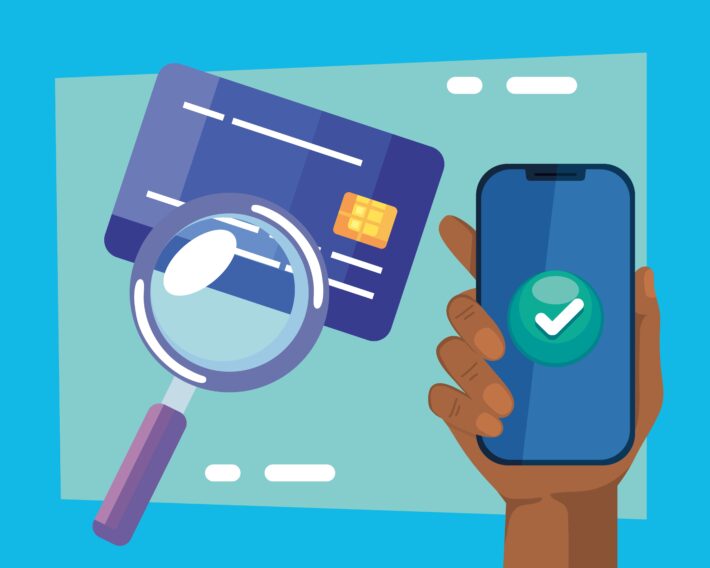Identity Verification Protecting Against Identity Theft And Account Hijacking

In the contemporary digital landscape, where personal information is readily accessible, identity verification has emerged as a critical line of defense against threats such as identity theft and account hijacking. This article examines the importance of identity verification, ID verification for identity theft ,outlining its operational mechanisms through methods such as document verification and biometric checks.
Furthermore, it addresses various types of verification, their advantages, and the potential risks associated with neglecting them. It also provides practical steps that businesses can take to establish comprehensive identity verification processes.
It is essential to remain informed and safeguard oneself in an increasingly vulnerable online environment.
Why is Identity Verification Important?
Identity verification is essential in the contemporary digital landscape, where the prevalence of cyber threats, including identity theft and account hijacking, presents considerable risks to personal information.
Given the rising frequency of data breaches and online scams, the establishment of robust identity verification processes is critical for maintaining online security and safeguarding sensitive data.
Both organizations and individuals must implement effective security measures to protect against identity fraud and strengthen their defenses against unauthorized access.
How Does Identity Verification Work?
The identity verification process entails a series of authentication methods aimed at confirming a user’s identity while safeguarding against potential security breaches. Organizations commonly employ a range of verification technologies, including document verification, biometric verification, and knowledge-based authentication, to ensure secure access and maintain data integrity.
By establishing a comprehensive verification process, businesses can effectively mitigate risks and enhance their identity management systems.
1. Document Verification
Document verification is a critical component of the identity verification process, requiring individuals to present valid identity documentation to confirm their identity. This method is essential for fraud detection, ensuring that the credentials provided are legitimate and adhere to established security measures. By employing advanced techniques such as encryption and intrusion detection, organizations can significantly enhance the reliability of document verification.
Organizations typically request a variety of identity documents, including passports, driver’s licenses, and national ID cards, each aligned with specific regulations and industry standards. The significance of thorough verification cannot be overstated, as it protects against identity theft while preserving the organization’s reputation.
By integrating advanced technologies such as artificial intelligence and machine learning, businesses can automate the verification process. This automation not only reduces the likelihood of human error but also accelerates approval times. Such strategic integration enables organizations to swiftly identify and respond to potential fraud attempts more effectively.
2. Biometric Verification
Biometric verification utilizes unique biological characteristics, such as fingerprints, facial recognition, and voice patterns, to authenticate a user’s identity. This advanced method has emerged as a reliable solution for identity verification, significantly enhancing user authentication and reinforcing security best practices. The incorporation of biometric data adds an additional layer of protection against identity theft and account hijacking.
By integrating these innovative verification methods into various applications, users can experience a seamless process that does not compromise security. While this technology presents numerous advantages, including increased convenience and accuracy, it also poses challenges such as privacy concerns and the necessity for robust data protection measures.
It is imperative for organizations to effectively navigate these challenges to fully leverage the potential of biometric verification. This will ensure that the verification process is not only simplified but also strengthens the overall security framework in identity protection.
3. Knowledge-based Authentication
Knowledge-based authentication necessitates that users respond to specific questions or provide information that is uniquely known to them, serving as a critical component in the user verification process.
This approach aims to enhance security by utilizing unique personal data, such as the name of a childhood pet or the street where one was raised. However, organizations must acknowledge that, despite its seemingly robust nature, this method is frequently targeted by cybercriminals who seek to exploit such information through social engineering tactics.
To mitigate associated risks, companies should consider the implementation of additional security measures, such as multi-factor authentication. This approach combines knowledge-based verification with a factor that the user possesses, such as a mobile device, or a characteristic inherent to the user, such as a fingerprint.
By adopting a comprehensive security strategy, organizations can significantly improve the reliability of their user verification processes while safeguarding sensitive information and promoting greater online privacy.
What are the Types of Identity Verification?
Identity verification includes various authentication methods, such as two-factor authentication, multi-factor authentication, and continuous authentication, each offering different levels of identity assurance.
The implementation of these strategies significantly enhances online security by requiring users to present multiple forms of verification prior to gaining access to sensitive information. Adopting these measures is crucial for protecting personal data and preventing unauthorized access.
1. Two-Factor Authentication
Two-factor authentication (2FA) serves as a critical security measure that requires users to provide two distinct forms of verification prior to accessing their accounts, thereby significantly enhancing the authentication process. This approach effectively reduces the risk of identity theft and account hijacking by introducing an additional layer of protection against unauthorized access.
Typically, the verification process comprises a combination of something the user knows, such as a password, and something the user possesses, such as a smartphone or hardware token that generates a unique code. Common methods of verification include text messages, email confirmations, or authentication applications that produce time-sensitive codes.
Implementing 2FA is essential in the contemporary digital landscape, as it not only safeguards personal information but also serves as a protective barrier against potential financial losses and privacy breaches. Given the increasing sophistication of cyber threats, the adoption of 2FA should be regarded as a fundamental component of every individual’s strategy for identity theft protection.
2. Multi-Factor Authentication
Multi-factor authentication (MFA) builds upon the principles of two-factor authentication by requiring users to provide multiple forms of verification to access their accounts. This approach enhances user verification and significantly improves security. MFA is recognized as a best practice within security protocols, effectively supporting fraud detection and risk assessment.
Considering the continuously evolving landscape of cyber threats, it is imperative for organizations to implement MFA in various forms, including security tokens, biometrics, or one-time passcodes delivered via SMS or email. Each method offers distinct advantages; for example, biometrics utilize unique physical attributes, making unauthorized access considerably more difficult.
As data breaches continue to escalate, reliance on multifactor strategies serves as a formidable defense in identity management, instilling confidence in both businesses and individuals. Ultimately, adopting these verification methods is not merely advisable but essential for protecting sensitive information in today’s digital landscape.
3. Continuous Authentication
Continuous authentication represents a sophisticated approach to identity verification, emphasizing real-time monitoring of user behavior to ensure ongoing identity validation. By employing behavioral biometrics, this method fosters user trust through the dynamic assessment of a user’s authenticity throughout their session. This approach significantly enhances identity management practices and security protocols.
In contrast to traditional authentication methods, which primarily rely on static credentials such as passwords or security tokens, continuous authentication employs a more comprehensive strategy. It consistently evaluates a range of factors, including typing patterns, mouse movements, and even gait analysis, thereby providing a multi-layered defense mechanism against unauthorized access.
The applications of this advanced approach span multiple sectors, including banking, healthcare, and enterprise environments, where secure access is of utmost importance. As the digital landscape continues to evolve, the integration of artificial intelligence and machine learning algorithms enables the development of more refined and responsive continuous authentication systems, rendering them increasingly vital within contemporary security architectures.
What Are the Benefits of Identity Verification?
Identity verification provides a range of significant benefits, including strong protection against identity theft, prevention of account hijacking, and assurance of compliance with various privacy regulations.
By adopting effective verification processes, organizations can improve their fraud detection capabilities, thereby enhancing user safety and fostering consumer trust.
1. Prevents Identity Theft
One of the primary advantages of identity verification is its effectiveness in preventing identity theft by ensuring that only verified users have access to sensitive information and accounts. Through comprehensive user verification procedures, organizations can significantly enhance their cybersecurity posture and reduce the risk of data breaches that jeopardize personal information.
By implementing advanced techniques such as multi-factor authentication and biometric verification, these organizations establish multiple layers of defense against unauthorized access. Such stringent practices not only serve as a deterrent but also enhance consumer confidence, as individuals are reassured that their data is being actively protected.
Furthermore, continuous monitoring and real-time alerts can effectively mitigate risks, allowing companies to respond promptly to any suspicious activities. Therefore, employing robust identity verification processes not only protects personal data but also maintains the integrity of the overall digital ecosystem.
2. Protects Against Account Hijacking
Identity verification plays a crucial role in safeguarding against account hijacking by implementing stringent user authentication measures that deter unauthorized access. By employing advanced fraud detection techniques, organizations can proactively identify and mitigate potential threats, thereby reinforcing their online security framework.
The integration of multi-factor authentication (MFA) significantly enhances the verification process by requiring users to provide multiple forms of identification before accessing their accounts. This additional layer of security makes it considerably more challenging for cybercriminals to gain unauthorized access, even if they manage to obtain a user’s password.
Furthermore, the use of machine learning algorithms can facilitate the detection of unusual behavior patterns, promptly alerting users and administrators to suspicious activities in real-time. Such proactive measures are essential for maintaining user trust and ensuring that sensitive information remains protected from unauthorized access.
3. Ensures Regulatory Compliance
Identity verification is a critical component for ensuring regulatory compliance with various laws and standards concerning privacy protection and data management. By adhering to established security policies, organizations can effectively manage identities while obtaining the necessary user consent for data handling practices.
Compliance with regulations such as the General Data Protection Regulation (GDPR) and the Health Insurance Portability and Accountability Act (HIPAA) emphasizes the significance of implementing robust identity verification processes. These legal frameworks require organizations not only to secure personal information but also to validate the identities of individuals accessing sensitive data.
As a result, organizations must develop comprehensive identity verification strategies that incorporate advanced technologies, such as biometric authentication and multi-factor authentication, in order to align their operational procedures with these regulatory expectations. By doing so, organizations can mitigate the risk of data breaches while fostering trust with clients and partners, thereby ensuring a secure environment for all stakeholders involved.
What Are the Risks of Not Using Identity Verification?
Neglecting identity verification presents substantial risks, including financial losses resulting from fraud, potential harm to an organization’s reputation due to data breaches, and the possibility of legal consequences arising from non-compliance with privacy regulations.
By failing to establish and enforce robust verification processes, businesses expose themselves to security vulnerabilities that can have extensive and far-reaching implications.
1. Financial Loss
One of the most pressing risks associated with the absence of identity verification is the potential for financial loss due to identity theft and fraud. In the absence of effective fraud detection mechanisms, organizations are vulnerable to significant financial setbacks as cybercriminals exploit weaknesses in user data.
For example, recent incidents involving major retailers have highlighted the serious consequences of compromised customer information. These breaches resulted in millions of dollars in losses, not only from immediate theft but also from legal fees, settlements, and damage to reputation.
The recovery process from such incidents can extend over several years, adversely affecting investor confidence and overall market position. By prioritizing proactive measures, such as implementing robust identity verification systems, businesses can mitigate these risks, thereby protecting both their assets and the trust of their customers.
Investing in these protective strategies is crucial, particularly when considering that the costs associated with not implementing them can significantly exceed the initial expenses.
2. Damage to Reputation
Data breaches resulting from the lack of identity verification can significantly damage an organization’s reputation, eroding consumer trust and undermining the effectiveness of security protocols. The process of rebuilding a tarnished reputation is often challenging, requiring substantial time and resources.
The implications of such breaches extend beyond immediate financial losses; they can fundamentally alter the relationship between businesses and their customers. Once trust is broken, it can take years to restore, as consumers may become increasingly hesitant to share personal information with entities perceived as unreliable.
The operational impact of these breaches can create a ripple effect throughout the organization, complicating marketing efforts and potentially straining partnerships and collaborations. For many businesses, implementing a robust identity verification system is not merely a compliance measure but an essential aspect of their long-term strategy to cultivate consumer confidence and ensure sustainable success.
3. Legal Consequences
The failure to implement identity verification processes can lead to significant legal consequences, particularly concerning compliance with privacy laws and regulations. Organizations that overlook these requirements may face substantial penalties and legal actions from regulatory authorities, as well as potential claims from affected consumers.
This oversight not only jeopardizes the organization’s reputation but also results in potential financial repercussions, including substantial fines and lawsuits. For example, under regulations such as the General Data Protection Regulation (GDPR) in Europe and the California Consumer Privacy Act (CCPA), companies are required to establish robust identity verification measures to safeguard consumer data.
Non-compliance can incur penalties that may amount to millions of dollars, thereby adversely impacting the organization’s financial standing. Additionally, repeated violations can lead to heightened oversight and increased scrutiny from regulatory agencies, further compounding the risks associated with inadequate attention to identity verification processes.
How Can Businesses Implement Identity Verification?
Businesses can employ a range of strategies to implement identity verification, including utilizing third-party identity verification services and developing customized in-house processes that align with their specific requirements.
Additionally, effective user education plays a crucial role in enhancing awareness of security measures and establishing best practices for risk management.
1. Third-Party Identity Verification Services
Third-party identity verification services provide businesses with a dependable solution for user verification, thereby enhancing security measures and aiding in fraud detection while safeguarding sensitive data. These services utilize advanced technologies and specialized expertise to streamline the verification process.
By employing such services, organizations can significantly enhance operational efficiency, as these solutions reduce the time and resources expended on manual verification procedures.
The utilization of third-party solutions also ensures compliance with various regulatory requirements, alleviating businesses from the complexities associated with keeping abreast of evolving legislation. Furthermore, the external auditing facilitated by these services contributes an additional layer of transparency and trust, thereby enabling improved risk management.
However, it is imperative to consider the potential drawbacks, such as reliance on external vendors, which may introduce vulnerabilities if not adequately managed. Balancing these factors is essential for achieving long-term success.
2. In-House Identity Verification Processes
Developing in-house identity verification processes enables businesses to customize their user authentication procedures according to their specific requirements, thereby enhancing identity management and aligning with particular security measures. Although in-house solutions are often more cost-effective than outsourcing, they necessitate adequate resources and specialized expertise.
Organizations embarking on this path must carefully weigh the benefits against various challenges, including the necessity for ongoing updates to remain compliant with evolving regulations. Effectively managing these identity verification requirements also entails investing in staff training and integrating advanced technologies that can enhance security.
By cultivating a culture of continuous improvement and maintaining a proactive stance in risk management, businesses can ensure that their identity verification processes are both robust and reliable. This methodical approach not only boosts user trust but also strengthens the organization against potential data breaches and fraudulent activities.
Frequently Asked Questions
What is identity verification?
Identity verification is the process of confirming that a person is who they claim to be. This can include verifying personal information, such as name, address, and date of birth, through various methods and tools.
Why is identity verification important?
Identity verification is important for protecting against identity theft and account hijacking. It helps ensure that only authorized individuals have access to sensitive information and accounts, preventing fraud and unauthorized access.
What are some common methods of identity verification?
Common methods of identity verification include document verification, biometric verification, knowledge-based authentication, and phone verification. Each method has its own advantages and can be used in different situations.
How can identity verification protect against identity theft?
By verifying a person’s identity, it helps ensure that they are the rightful owner of the personal information they are providing. This makes it more difficult for identity thieves to access sensitive information and commit fraud.
Can identity verification prevent account hijacking?
While it is not a foolproof method, identity verification can significantly reduce the risk of account hijacking. By confirming a person’s identity, it makes it more difficult for unauthorized individuals to gain access to accounts and sensitive information.
What are some best practices for identity verification?
Some best practices for identity verification include using multiple methods of verification, regularly updating and verifying personal information, and incorporating fraud detection tools to catch suspicious activity.



